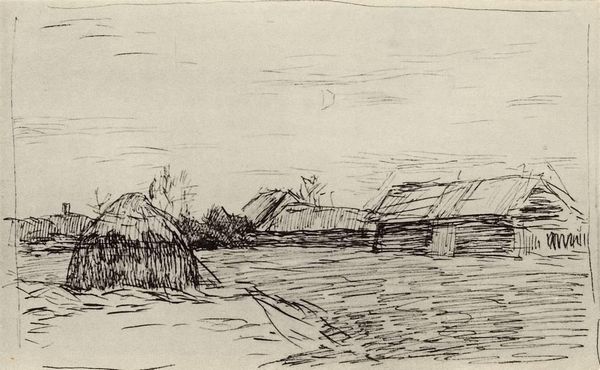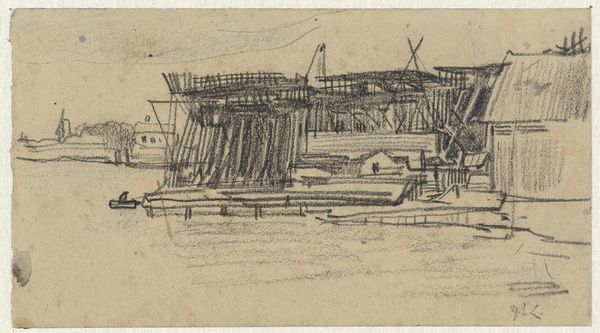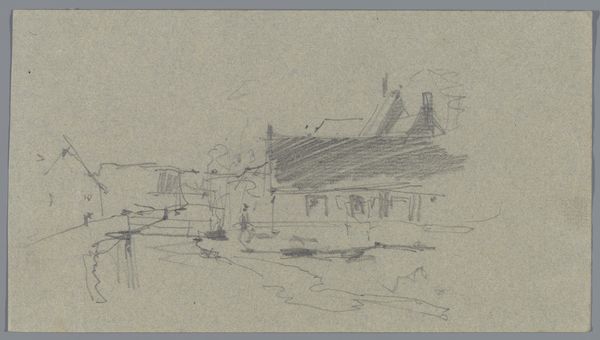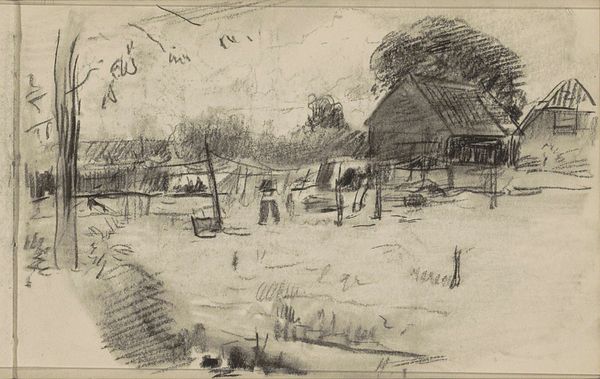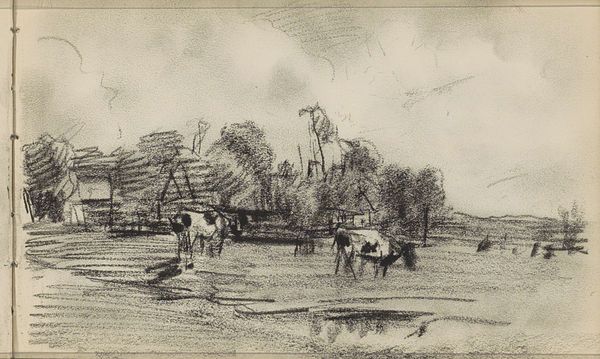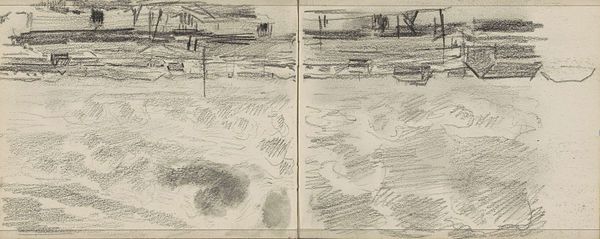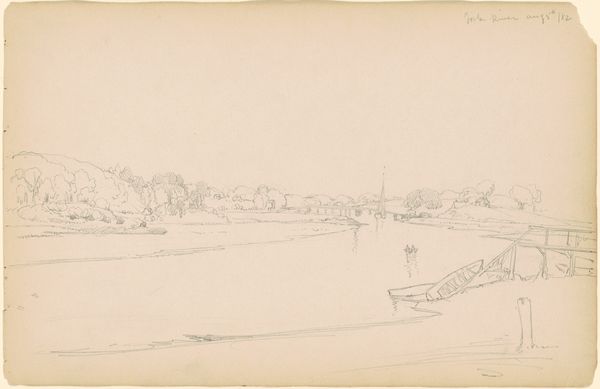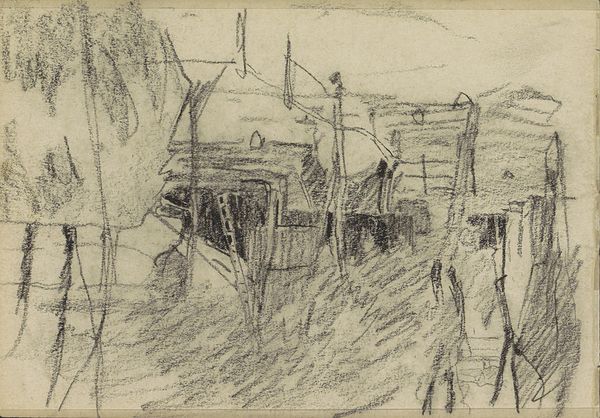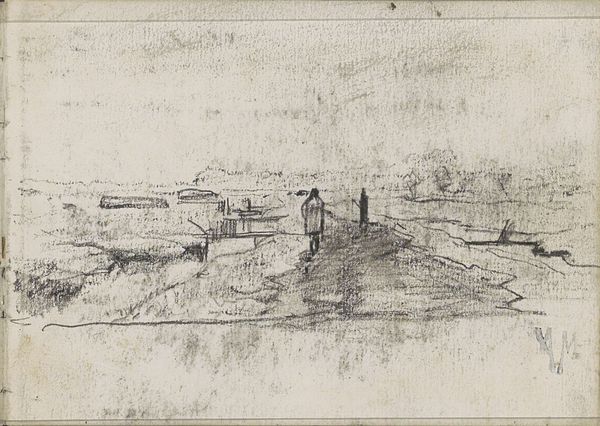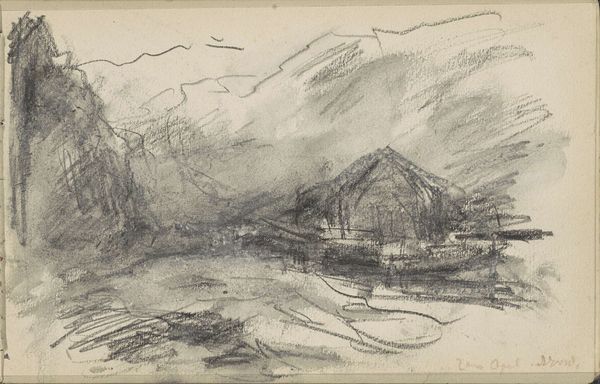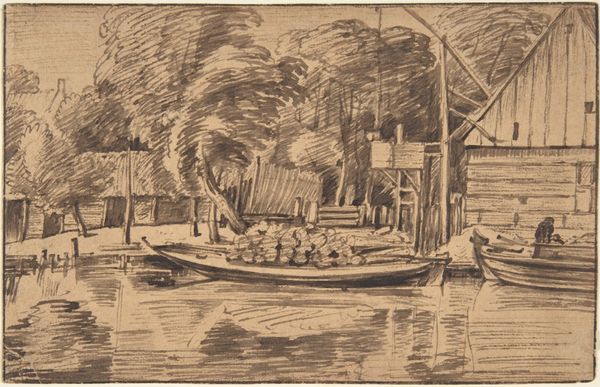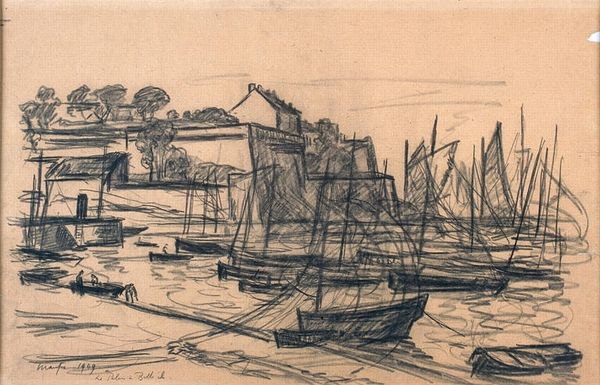
Copyright: Rijks Museum: Open Domain
Curator: Welcome. We are looking at "View of the Rhine and Lek Windmill at Wijk bij Duurstede," created by Willem Witsen between 1906 and 1907. It's currently housed here at the Rijksmuseum. Editor: It's an atmospheric work; the soft pencil and charcoal create a hazy, almost dreamlike scene. The reflections in the water dominate the lower portion, pulling the viewer in. Curator: Absolutely. Witsen was part of the Amsterdam Impressionism movement, which embraced capturing fleeting moments and atmospheric effects. He came from an upper-class background and frequently depicted scenes of Dutch life. His style contrasts greatly from the French Impressionists who broke away from academic traditions. Here, it is as though Witsen’s trying to create continuity by modernizing established visual norms. Editor: The windmill, though somewhat roughly sketched, feels almost like a protective presence over the clustered buildings. Mills themselves have long stood as symbols of industry, community, and, of course, the Dutch landscape, particularly at the confluence of two waterways. The lack of strong lines and shading softens their role—do you think this signifies a transformation into memory? Curator: That’s an astute observation. I think Witsen’s method highlights a shifting Dutch identity in the early 20th century. Industrialization and urbanization were changing the landscape, and these windmills, once symbols of progress, were starting to be seen nostalgically. His soft touch immortalizes but also softens its iconic weight. Editor: I notice the reflections are darker, heavier somehow, than the rest of the image, which creates an unusual visual hierarchy and gives depth. In my view it almost introduces an uncanny valley of emotion. Curator: I concur. One might conclude from this work that as landscapes transition and technology advances, certain historic traditions run the risk of losing their once clear-cut clarity. It might mean these things may only live on through faint reflections. Editor: The play between the fleeting nature of the style and solidity of those established symbols provides rich tension for further consideration. Thank you.
Comments
No comments
Be the first to comment and join the conversation on the ultimate creative platform.
